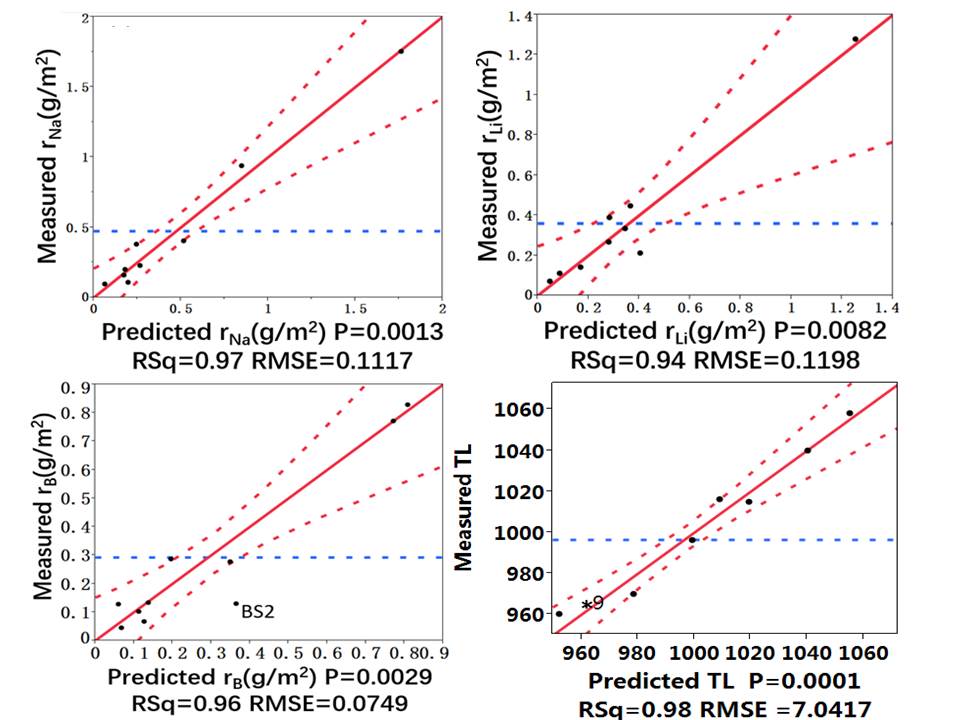Composition-structure-property (C-S-P) modeling, named as “glass structural gene modeling (GSgM), is a method that threads composition-structure (C-S) and structure-property (S-P) modeling together to carry out accurate simulation. High accuracy of GSgM comes from the transformation of the nonlinear relationship of C-P to two linear relationships of C-S and S-P. The combination of C-S and S-P models produced the modeling platform to carry out the bi-directional C↔S↔P modeling. It is known that both chemical durability and liquidus temperature (TL) are difficult to achieve accurate simulation with limited data by C-P modeling in HLW glass, and C-S-P method is proved to be a valuable alternative to solve this problem. Integral area of Gaussian peaks derived from FTIR or Raman peak fitting was used as the structural data to build S-P models of leaching rate and TL. Fig.1 is the S-P models of Na+, Li+, B3+ leaching rate and TL established by 11 HLW borosilicate glasses. Same as C-P method, S-P modeling alone can be used independently to simulate glass property. Results show that GSgM is highly suitable for the initial glass composition screening and property prediction purpose with limited data and future database development.
Abstract
Application of glass structural gene modeling in the simulation of chemical durability and liquidus temperature in HLW glass
Application of glass structural gene modeling in the simulation of chemical durability and liquidus temperature in HLW glass
Liyan Zhang* 1, Zhongdi Li 2
1 Shanghai Institute of Optics and Fine Mechanics, Chinese Academy of Sciences, Shanghai 201815, China.
2 China Nuclear Power Engineering Co., Ltd., Beijing 100840, China
2 China Nuclear Power Engineering Co., Ltd., Beijing 100840, China

- Type: Poster
- Related categories: Simulation/modeling
